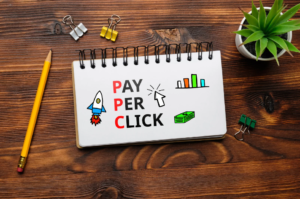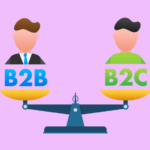Are you looking to take your B2B business to new heights and generate more leads? One surefire way to achieve this is by creating an effective B2B PPC strategy.
In today’s digital landscape, PPC advertising has become an indispensable tool for businesses to reach their target audience and drive conversions. Whether you’re new to PPC or want to refine your existing strategy, this blog post will guide you through the detailed process of creating a powerful B2B PPC strategy that will help you maximize your ROI and achieve your business goals.
From defining your goals and objectives to scaling and expanding your B2B PPC strategy, we’ll cover all the essential steps to ensure your PPC campaigns deliver the results you desire. Get ready to take your business to the next level with a winning B2B PPC strategy!
. . .
Contents
- What is B2B PPC Advertising?
- Defining Your B2B PPC Goals & Objectives
- Understanding Your Target Audience
- Adopting a Lead Generation Strategy
- Conducting Thorough Keyword Research
- Designing Effective Landing Pages
- Crafting Compelling Ad Copy
- Organizing Your B2B PPC Campaigns
- Monitoring Your Campaign Performance
- Optimizing Your B2B PPC Strategy for Mobile Devices
- Scaling & Expanding Your B2B PPC Strategy
- Conclusion
. . .
What is B2B PPC Advertising?
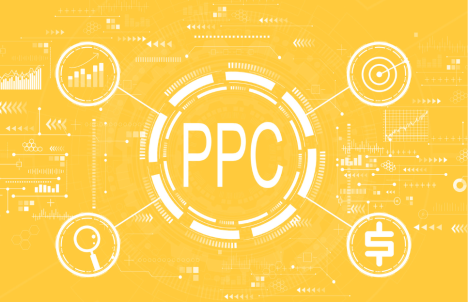
Definition of B2B PPC Advertising
B2B PPC advertising refers to pay-per-click advertising specifically targeting businesses. It is a digital marketing strategy where businesses create and run paid ads through online advertising platforms (like Google Ads or Bing Ads) to reach other businesses as their target audience.
This form of advertising allows businesses to display their ads to potential clients or customers searching for relevant products or services specific to their industry. These ads are typically displayed at the top or side of search engine result pages, and businesses only pay when a user clicks on their ad.
B2B PPC advertising can be an effective paid media strategy for businesses to generate leads, drive traffic to their website, and increase brand awareness within the B2B market.
B2B vs. B2C PPC Strategies
B2B (Business-to-Business) and B2C (Business-to-Consumer) PPC strategies differ significantly due to the distinct nature of their target audiences and marketing objectives.
In B2B PPC, the focus is on appealing to businesses and decision-makers, aiming to generate qualified leads and nurture long-term relationships. Marketing to a business typically requires very clear, rational justifications for a business to make purchases. As a result, B2B PPC campaigns often prioritize keywords with industry-specific jargon and target professional demographics.
However, B2C PPC is geared towards reaching individual consumers and driving immediate sales. B2C campaigns typically emphasize emotional appeals, eye-catching visuals, and broader keyword targeting to capture a wider audience. B2C PPC strategies frequently leverage social media platforms and e-commerce channels for direct transactions.
Understanding these fundamental differences is crucial for tailoring PPC campaigns to effectively engage and convert the right audience in each respective market.
Impact of a B2B PPC Strategy on Business Growth
Developing a B2B PPC strategy can have a significant impact on business growth. By utilizing targeted keywords and ad placements, B2B companies can reach their ideal audience and generate qualified leads.
PPC campaigns allow businesses to have more control over their marketing efforts, as they can set budgets and monitor performance in real time. This data-driven approach helps companies optimize their campaigns for maximum ROI.
Additionally, a B2B PPC strategy can accelerate business growth by increasing brand visibility, driving website traffic, and ultimately converting prospects into customers. It provides a measurable and scalable marketing channel that can generate immediate results and contribute to long-term business success.
Defining Your B2B PPC Goals & Objectives

Identifying Specific Goals for Your B2B PPC Strategy
Identifying specific goals for your B2B PPC strategy is essential as it provides a clear direction and purpose to your digital marketing efforts. Without well-defined objectives, you risk wasting resources on unfocused campaigns that fail to deliver measurable results.
Here are the steps to help you determine your specific goals:
- Research Your Target Audience: Understand your target audience’s preferences, pain points, and behavior to align your goals with their needs and expectations.
- Understand Your Business Objectives: Start by aligning your PPC goals with your broader business objectives. Whether it’s lead generation, sales, brand awareness, or customer retention, ensure your PPC efforts support the overall business goals.
- Consider the Sales Funnel: Tailor your goals to different stages of the sales funnel. For instance, focus on lead generation at the top of the funnel and on conversion and customer retention at the bottom.
- Set Quantifiable Targets: Make your goals measurable and time-bound. For example, aim to increase leads by 20% within the next quarter or achieve a 5% increase in conversion rate by the end of the year.
- Budget Considerations: Ensure your goals are feasible within your budget constraints. Set priorities and allocate resources accordingly.
- Align with Sales & Marketing Teams: Align your PPC goals with your overall sales and marketing objectives. Coordinate with these teams to ensure that your PPC campaigns are supporting their efforts and driving the desired outcomes.
- Analyze Past Performance: Review previous PPC campaigns to learn from successes and areas of improvement. This analysis can guide you in setting realistic and achievable goals.
- Define Key Performance Indicators (KPIs): Identify the metrics that directly measure the success of your PPC campaigns. This could include click-through rates (CTR), conversion rates, cost per lead (CPL), return on ad spend (ROAS), and more.
- Monitor & Adjust: Regularly monitor campaign performance and be ready to adjust your goals based on data insights and market dynamics.
- Review & Reassess Goals: Periodically review your goals and assess whether they are still relevant and aligned with your business objectives. Make adjustments as needed based on campaign performance and market conditions.
By following these steps, you can establish clear and specific goals for your B2B PPC strategy, increasing the likelihood of achieving meaningful results and maximizing the impact of your advertising efforts.
Aligning B2B PPC Strategy Goals with Overall Business Objectives
Aligning your B2B PPC strategy goals with your overall business objectives is crucial for ensuring that your digital marketing efforts contribute directly to the success of your company.
When PPC goals are in harmony with broader business objectives, such as revenue growth, market expansion, or customer acquisition, it creates a cohesive and focused marketing strategy. This alignment allows you to prioritize initiatives that have a direct impact on your bottom line and steer your PPC campaigns toward generating tangible business results.
Moreover, it helps avoid misallocation of resources and ensures that your advertising efforts are working in concert with other marketing channels to achieve the organization’s overall goals.
By integrating PPC into your larger business strategy, you can create a powerful marketing engine that drives sustained growth and long-term success for your B2B enterprise.
Setting Measurable Key Performance Indicators
Setting measurable KPIs for your B2B PPC strategy involves identifying specific metrics that can be quantified and tracked to gauge the success of your campaigns.
Here’s a step-by-step guide to help you establish measurable KPIs:
- Align with Business Objectives: Start by understanding your overall B2B business objectives. Whether it’s lead generation, sales, or brand awareness, your PPC KPIs should directly contribute to these goals.
- Choose Relevant Metrics: Select KPIs that are directly related to the success of your PPC campaigns. Common B2B PPC metrics include Click-Through Rate (CTR), Conversion Rate, Cost Per Lead (CPL), Return on Ad Spend (ROAS), and Conversion Value.
- Make Goals Specific: Set specific numerical targets for each KPI. For instance, aim to achieve a 3% CTR or reduce CPL by 15% within a specific timeframe.
- Set Timeframes: Define the time period for achieving your KPIs. It could be monthly, quarterly, or annually, depending on the campaign’s objectives and timeline.
- Utilize Tracking Tools: Implement robust tracking tools like Google Analytics and conversion tracking to accurately measure the performance of your PPC campaigns.
- Benchmark Past Performance: Review historical campaign data to establish baseline metrics and understand where improvements can be made.
- Consider the Sales Funnel: Set KPIs for different stages of the sales funnel, from lead generation to conversion, to gauge the effectiveness of your campaigns at each stage.
- Stay Realistic: Ensure that your KPIs are realistic and achievable within your budget and industry benchmarks.
- Regularly Monitor & Adjust: Continuously monitor the performance of your PPC campaigns and make data-driven adjustments as needed to optimize results.
- Communicate with Stakeholders: Share your KPIs and progress with relevant stakeholders in your organization to ensure alignment and support.
By following these steps, you can establish measurable KPIs for your B2B PPC campaigns, enabling you to track performance, identify areas of improvement, and demonstrate the impact of your advertising efforts on your business objectives.
Understanding Your Target Audience

Defining Your Ideal B2B Buyer Persona
Defining your ideal B2B buyer persona is a crucial step in crafting an effective B2B PPC strategy.
A buyer persona represents a detailed profile of your target audience, encompassing their industry, job role, pain points, goals, and buying behavior. By understanding the unique characteristics and motivations of your ideal B2B customer, you can tailor your PPC campaigns to resonate with their specific needs and preferences.
This level of personalization allows you to create highly relevant ad copy, select appropriate keywords, and optimize targeting to reach the right audience. The result is an improved click-through rate, higher conversion rates, and more qualified leads.
Defining your buyer persona lays the foundation for a successful B2B PPC strategy that efficiently connects your products or services with the most valuable prospects, maximizing the return on your advertising investment.
Conducting Market Research to Understand Customer Needs
In order to craft an effective B2B PPC strategy that will generate quality leads, it’s important to conduct thorough market research to understand your customers’ needs.
Here are 10 key steps to follow:
- Identify Your Target Audience: Define the specific industry, company size, and job roles of your ideal B2B customers. Understand their pain points, challenges, and goals related to your products or services.
- Competitor Analysis: Study your competitors’ PPC campaigns to identify their strengths and weaknesses. Analyze the keywords they are targeting, their messaging, and the platforms they are using.
- Keyword Research: Conduct extensive keyword research to identify the search terms and phrases your target audience uses when looking for products or services in your industry. Focus on long-tail keywords that reflect specific customer needs.
- Customer Surveys & Interviews: Gather direct feedback from your current customers through surveys or interviews. Ask about their preferences, pain points, and what they value most in a B2B solution.
- Website Analytics: Analyze your website data to understand customer behavior, popular content, and conversion paths. Identify which pages are most visited and which ones lead to conversions.
- Social Listening: Monitor social media platforms and online communities relevant to your industry. Observe discussions and gather insights into customer sentiments and trending topics.
- Industry Reports & Publications: Stay updated with industry reports and publications to understand the latest trends, challenges, and opportunities in your B2B sector.
- Feedback from Sales & Customer Support: Collaborate with your sales and customer support teams to gather valuable insights from direct interactions with customers.
- Create Buyer Personas: Based on the collected data, develop detailed buyer personas that represent your target audience’s characteristics, needs, and behaviors.
- Refine Your PPC Strategy: Utilize the gathered insights to refine your B2B PPC strategy. Craft compelling ad copy, target relevant keywords, and choose appropriate platforms to reach and engage your ideal customers effectively.
By conducting thorough market research, you gain a deep understanding of your target audience’s needs, enabling you to tailor your B2B PPC campaigns to resonate with their preferences and pain points. This customer-centric approach increases the likelihood of capturing qualified leads, driving conversions, and achieving the desired results with your B2B PPC strategy.
Analyzing the Customer Journey
By understanding the path a potential B2B buyer takes from initial awareness to conversion, you can tailor your PPC campaigns to meet their specific needs at every stage. This in-depth analysis allows you to create highly relevant ad content, select targeted keywords, and optimize landing pages, ensuring a seamless and engaging experience for prospects.
By aligning your B2B PPC strategy with the customer journey, you can increase the likelihood of capturing qualified leads and nurturing them through the sales funnel, ultimately driving higher conversion rates and maximizing the return on your PPC investment.
Moreover, customer journey analysis provides valuable insights into customer preferences and pain points, helping you make informed decisions to continually improve and refine your B2B PPC strategy for optimal results.
Utilizing Audience Targeting Options to Reach the Right Audience
Utilizing audience targeting options is a pivotal component of a successful B2B PPC strategy, as it enables businesses to reach the right audience with precision and relevance.
By leveraging various targeting parameters, such as industry, job title, company size, and geographic location, B2B advertisers can hone in on their ideal prospects and decision-makers. This level of granularity ensures that the PPC ads are displayed only to the most relevant individuals, increasing the chances of capturing qualified leads and driving meaningful conversions.
Moreover, audience targeting allows businesses to tailor their ad content and messaging to match the specific needs and pain points of their target audience, fostering a deeper connection and engagement.
By reaching the right audience at the right time with highly targeted campaigns, B2B companies can optimize their advertising spend, improve click-through rates, and achieve a higher ROI, making audience targeting a vital aspect of a successful B2B PPC strategy.
Adopting a Lead Generation Strategy

Importance of a Lead Generation Strategy
As a B2B business, your primary objective is to attract and nurture valuable leads that have the potential to become paying customers.
A lead generation strategy in your PPC campaigns enables you to capture contact information from interested prospects, building a database of qualified leads for further engagement and nurturing.
By tailoring your ad content and landing pages to encourage lead submissions, you can maximize the chances of converting ad clicks into meaningful interactions.
Ways to Capture Contact Information for Lead Generation
A well-crafted lead generation strategy ensures that your PPC efforts are directed towards attracting the right audience, providing them with valuable incentives, and enticing them to take the desired action.
The result is a continuous stream of qualified leads, fostering meaningful relationships, and driving significant business growth and success in the competitive B2B landscape.
Here are 9 tactics you can adopt to capture contact information as a part of your B2B PPC strategy:
- Lead Capture Forms: Create user-friendly lead capture forms on dedicated landing pages that ask for essential contact details, such as name, email address, and company name.
- Incentive-Based Offers: Offer valuable incentives like e-books, whitepapers, industry reports, or webinars in exchange for prospects’ contact information.
- Newsletter Sign-Ups: Provide an option for users to subscribe to your newsletter to receive updates, industry insights, and exclusive offers.
- Webinar/Demo Registrations: Encourage sign-ups for webinars or demos by capturing attendees’ contact information during registration.
- Content Downloads: Allow users to download valuable content like case studies or customer success stories in exchange for their contact details.
- Free Trials or Samples: Provide free trials or samples of your products or services, asking for contact information for access.
- Interactive Tools: Offer interactive tools or calculators that require users to submit their information to generate results.
- Exit-Intent Popups: Use exit-intent popups on your website to capture contact information from visitors who are about to leave.
Remember to keep the lead capture process simple and clear, asking for only essential information to reduce friction and increase form submissions. Regularly test and optimize your lead capture tactics to maximize conversions and build a valuable database of qualified leads for your campaigns and B2B PPC strategy.
Conducting Thorough Keyword Research

Identifying Relevant & High-Intent Keywords
Identifying relevant and high-intent keywords is an important part of conducting keyword research as it directly impacts the success and effectiveness of the campaign.
By targeting keywords that are specifically relevant to the products or services offered by a B2B company, it ensures that the ads are reaching the right audience and increasing the likelihood of generating quality leads.
High-intent keywords, which are phrases that indicate strong purchase intent or a specific need, are particularly important as they attract users who are actively searching for solutions or providers in the B2B industry. This increases the chances of conversions and ultimately drives business growth.
By focusing on relevant and high-intent keywords, B2B companies can optimize their PPC strategy, maximize their return on investment, and achieve their marketing goals.
Using Keyword Research Tools & Analytics to Gather Insights
Keyword research tools and analytics play a pivotal role in gathering valuable insights for an effective B2B PPC strategy. Tools such as KWFinder or SEMrush help businesses identify relevant keywords and search terms that potential B2B customers use when seeking products or services.
Here’s how to make the most of these tools:
- Identify Relevant & High-Converting Keywords: Utilize keyword research tools to find relevant keywords that align with your B2B offerings and target audience, and prioritize high-converting keywords by allocating more budget to them.
- Assess Search Volume & Competition: Analyze the search volume and level of competition for each keyword. Focus on keywords with a balance of sufficient search volume and manageable competition.
- Set Up Conversion Tracking: Implement conversion tracking in your analytics tool to measure the effectiveness of your PPC campaigns in generating leads or sales.
- Monitor Click-Through Rates (CTR): Keep a close eye on CTR to gauge ad relevancy and adjust ad content and targeting if necessary.
- Segment Data: Group data by demographics, location, or behavior to gain insights into specific audience segments and tailor campaigns accordingly.
- A/B Test Ad Variations: Use A/B testing to compare different ad variations and landing pages, determining which ones yield the best results.
- Analyze User Behavior: Utilize analytics tools to track user behavior on your website, identifying popular pages and engagement patterns, while also monitoring potential improvement and optimization throughout the conversion process.
- Measure Return on Investment (ROI): Analyze the ROI of your PPC campaigns to ensure that your advertising efforts align with your B2B business objectives.
- Monitor Competitor Performance: Utilize competitive research tools to gain insights into your competitors’ PPC strategies and adjust your approach accordingly.
- Stay Updated: Continuously monitor and adapt your B2B PPC strategy based on keyword research and analytics insights to maintain relevance and effectiveness.
When using these keyword research tools, combine the insights gathered with data from your PPC analytics platform (e.g. Google Analytics) to gain a comprehensive understanding of keyword performance, audience behavior, and conversion paths.
This integrated approach will help you refine your B2B PPC strategy and optimize your campaigns for better results.
Long-Tail Keywords & Niche Opportunities for B2B PPC
Long-tail keywords and niche opportunities are necessary for B2B PPC campaigns as they allow businesses to target a specific audience and increase their chances of conversion. Long-tail keywords are more specific and detailed search terms with lower search volume but higher intent, making them highly relevant to B2B audiences with specific needs and preferences.
For instance, “Best cloud-based project management software for remote teams” is an example of a long-tail keyword that caters to a niche audience seeking a particular solution for their remote project management needs.
By targeting long-tail keywords, businesses can reach a more focused and qualified audience, increasing the likelihood of capturing valuable leads. Additionally, long-tail keywords often face less competition, making it more cost-effective to bid on them.
Embracing niche opportunities further allows B2B companies to cater to specialized industries or unique customer segments, enabling them to stand out in a competitive landscape.
Designing Effective Landing Pages
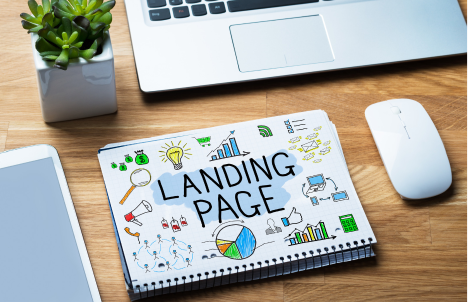
Creating User-Friendly & Conversion-Focused Landing Pages
Creating well-designed landing pages to the specific needs and expectations of your target audience can significantly improve the chances of converting ad clicks into valuable leads or sales.
User-friendly landing pages help reduce bounce rates and improve quality scores, positively impacting your PPC ad rankings and lowering the cost per click. Moreover, conversion-focused landing pages enable you to track and analyze user behavior, gaining valuable insights for continuous optimization.
By consistently refining your landing pages based on data-driven feedback, you can maximize the effectiveness of your B2B PPC campaigns and achieve higher ROI, driving meaningful business growth and success.
Delivering a Clear & Compelling Value Proposition
Delivering a clear and compelling value proposition is crucial for a B2B PPC strategy because it helps businesses differentiate themselves from their competitors and communicate the unique value they offer to potential customers.
A value proposition outlines the benefits and advantages that a business provides to its target audience, highlighting why they should choose to engage with the business.
In a B2B context, where businesses are often making complex purchasing decisions, a strong value proposition helps build trust and credibility, making it more likely for potential customers to click on the PPC ad and convert them into leads or customers.
Without a clear and compelling value proposition, businesses risk blending in with the competition and failing to capture the attention and interest of their target audience in a crowded online marketplace.
Optimizing Landing Page Elements for Maximum Conversions
Optimizing landing page elements is crucial for maximizing conversions in your B2B PPC strategy. A well-designed landing page can significantly increase the chances of converting visitors into leads or customers.
To achieve this, it is important to ensure that the landing page is visually appealing, easy to navigate, and aligned with the messaging in your PPC ads. The headline should be attention-grabbing and clearly convey the value proposition of your offering.
Additionally, the call-to-action should be prominently displayed and compelling, encouraging visitors to take the desired action. Including testimonials, case studies, or other forms of social proof can also help build trust and credibility. It is also important to optimize the page for mobile devices and ensure fast loading times.
By optimizing these elements, you can enhance the user experience and ultimately drive more conversions through your B2B PPC strategy.
Crafting Compelling Ad Copy

Writing Attention-Grabbing Headlines & Ad Descriptions
In a competitive digital landscape, captivating headlines immediately capture the attention of potential customers and entice them to click on the ad.
By incorporating compelling language, highlighting unique selling points, and addressing the pain points of the target audience, businesses can effectively communicate their value proposition and differentiate themselves from competitors. Ad descriptions should further reinforce the headline’s message while providing relevant details and a clear call-to-action.
By crafting engaging and informative headlines and ad descriptions, businesses can maximize their click-through rates, generate quality leads, and ultimately drive conversions in their B2B PPC campaigns.
Highlighting Unique Value Propositions
By clearly communicating what sets your business apart from competitors, you can attract the attention of potential customers and stand out in a crowded marketplace.
Emphasizing your unique value propositions in your PPC ads allows you to differentiate your offerings, showcase your expertise, and demonstrate the specific benefits that your products or services can provide. This not only helps to capture the interest of your target audience but also increases the likelihood of generating high-quality leads and driving conversions.
By effectively highlighting your unique value propositions, you can position your business as a trusted and valuable solution for B2B customers, ultimately leading to business growth and success.
Incorporating Strong Calls-to-Action for Engagement
Incorporating strong calls-to-action (CTAs) is crucial for a B2B PPC strategy as it helps to increase engagement and drive desired actions from potential customers.
A well-crafted CTA can effectively guide users on what specific action they should take, such as signing up for a newsletter, requesting a demo, or downloading a whitepaper. By clearly stating the benefits and value proposition, CTAs can create a sense of urgency and motivate users to take immediate action.
This not only increases the chances of converting leads into customers but also helps businesses to track and measure the effectiveness of their PPC campaigns. Without strong CTAs, businesses may miss out on valuable opportunities to engage with their target audience and achieve their desired goals.
Organizing Your B2B PPC Campaigns
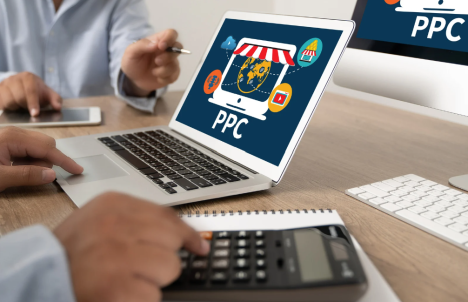
Organizing Campaigns & Ad Groups for Better Control
Organizing campaigns and ad groups is crucial for better control and effectiveness in your B2B PPC strategy. By structuring your PPC account in a well-organized manner, you can manage and optimize your campaigns more efficiently.
Start by grouping campaigns based on common themes or business objectives, such as products, services, or target audience segments. Within each campaign, create specific ad groups that contain closely related keywords and ad variations. This segmentation allows you to tailor ad content and bids to match the specific intent of each group, resulting in higher relevance and better Quality Scores.
Additionally, it facilitates easy tracking and analysis of performance metrics for individual ad groups, enabling you to make data-driven optimizations. By organizing campaigns and ad groups, you gain better control over your B2B PPC efforts, ensuring that your advertising budget is allocated effectively and driving maximum results in a competitive B2B landscape.
Using Campaign Settings to Target the Right Audience
Utilizing your campaign settings is an important aspect of targeting the right audience for your B2B PPC strategy. Here’s how you can leverage campaign settings to ensure precise audience targeting:
- Geographic Targeting: Set your campaigns to target specific regions, countries, or cities relevant to your B2B business. This ensures that your ads reach the right audience in the desired geographic locations.
- Language Targeting: Choose the languages in which your target audience conducts searches, allowing you to deliver ads in their preferred language for better engagement.
- Device Targeting: Optimize your campaigns for different devices (desktop, mobile, tablet) to ensure your ads are displayed appropriately for users on various devices.
- Ad Schedule (Dayparting): Control when your ads are shown by scheduling them during peak hours or specific days when your target audience is most active.
- Bid Strategy: Select the appropriate bid strategy based on your campaign goals. For example, use cost-per-click (CPC) for lead generation campaigns and maximize conversions for sales-oriented campaigns.
- Audience Targeting: Utilize audience targeting options to reach specific demographics, job titles, industries, or retarget previous website visitors to focus on a highly relevant audience.
- Negative Keywords: Add negative keywords to exclude irrelevant searches and prevent your ads from appearing for irrelevant queries.
- Budget Allocation: Allocate your budget strategically among campaigns to prioritize high-performing ones and ensure you invest more in campaigns that generate better results.
By fine-tuning campaign settings to align with your B2B audience’s preferences and behavior, you can target the right audience effectively, maximize ad relevance, and drive higher conversions in your B2B PPC strategy.
Continuous monitoring and optimization of these settings based on data insights will help you refine your audience targeting and achieve optimal results with your B2B PPC campaigns.
Implementing Ad Extensions to Enhance Visibility
Implementing ad extensions is a powerful tactic to enhance visibility and effectiveness in your B2B PPC strategy. Ad extensions allow you to display additional information alongside your ads, making them more compelling and engaging for your target audience. They also occupy more space on the search results page, pushing competitors further down and giving your ads greater prominence.
Google Ads offers several extensions that businesses can utilize in their B2B PPC advertising to enhance their ads and provide more valuable information to potential customers. A few of the most commonly used Google Ads extensions for B2B PPC advertising include:
- Sitelink Extensions: These allow you to add additional links to specific pages on your website, directing users to relevant sections such as product pages, case studies, or contact information.
- Call Extensions: This extension displays your business phone number alongside your ad, making it easier for users to directly call your company.
- Location Extensions: If you have a physical location, this extension includes your business address and a map marker in the ad, helping local B2B customers find and visit your establishment.
By leveraging ad extensions, such as site link extensions, call extensions, and location extensions, you not only enhance the visibility of your B2B PPC ads but also create a more engaging user experience, ultimately driving higher click-through rates, better ad performance, and increased chances of capturing valuable leads or sales.
Monitoring Campaign Performance

Implementing Conversion Tracking & Analytics Tools
Conversion tracking allows you to measure the effectiveness of your PPC campaigns by tracking specific actions that users take on your website, such as form submissions, sign-ups, or purchases. By setting up conversion tracking, you can determine which campaigns, keywords, and ads are driving valuable results and adjust your strategy accordingly.
Analytics tools, such as Google Analytics, provide in-depth insights into user behavior, traffic sources, and conversion paths. This data helps you understand how visitors interact with your website and identifies opportunities for improvement.
By combining conversion tracking and analytics data, you gain valuable insights into the performance of your B2B PPC campaigns, enabling you to make data-driven decisions, optimize your advertising efforts, and achieve better ROI.
Tracking Key Metrics & KPIs for Performance Evaluation
As part of your B2B PPC strategy, tracking the right key metrics and KPIs is crucial to measure the success and effectiveness of your campaigns. Here are some key metrics and KPIs you should track:
Key Metrics:
- Click-Through Rate (CTR): The percentage of users who click on your ad after seeing it.
- Conversion Rate: The percentage of users who complete a desired action (e.g., filling out a form or making a purchase) after clicking on your ad.
- Cost per Click (CPC): The average cost you pay for each click on your ad.
- Cost per Conversion (CPA): The average cost you pay for each conversion or desired action.
- Quality Score: A metric used by search engines to assess the relevance and quality of your ads and landing pages.
Key Performance Indicators (KPIs):
- Return on Investment (ROI): The ratio of revenue generated to the cost of the PPC campaign, indicating the overall profitability of your efforts.
- Cost per Lead (CPL): The average cost you pay for each lead generated through PPC campaigns.
- Customer Lifetime Value (CLV): The estimated value of a customer over the entire duration of their relationship with your business.
- Lead-to-Customer Conversion Rate: The percentage of leads that convert into paying customers.
- Ad Spend as a Percentage of Revenue: The proportion of total revenue spent on PPC advertising.
In addition to these metrics and KPIs, consider tracking platform-specific data for social media or display advertising, such as engagement metrics and reach.
Regularly analyzing these performance indicators helps you identify strengths and weaknesses in your B2B PPC strategy, optimize your campaigns, and make data-driven decisions to achieve your business objectives effectively.
Making Data-Driven Optimizations Based on Insights
Making data-driven optimizations based on insights is a critical component of a successful B2B PPC strategy. By continuously analyzing key metrics, KPIs, and user behavior, you can identify trends, strengths, and areas for improvement in your campaigns.
Data-driven insights allow you to make informed decisions on bid adjustments, ad copy enhancements, keyword refinements, and targeting modifications to optimize campaign performance. A/B testing can further validate these optimizations and help fine-tune your PPC efforts.
By embracing a data-driven approach, you ensure that your B2B PPC strategy remains agile, adaptable, and aligned with your business goals, ultimately driving better results, maximizing ROI, and achieving meaningful business growth.
Optimizing Your B2B PPC Strategy for Mobile Devices
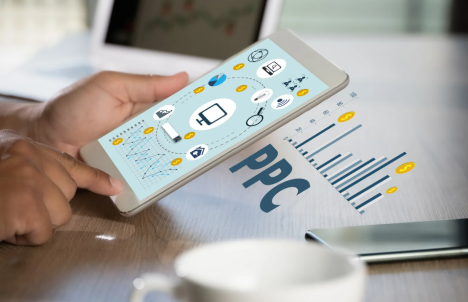
Importance of Mobile Optimization for B2B PPC Campaigns
With the majority of internet users accessing information on their smartphones and tablets, it is essential for businesses to ensure that their PPC ads and landing pages are optimized for mobile devices.
By tailoring the content, design, and user experience specifically for mobile users, businesses can maximize their reach and engagement with the B2B audience.
Mobile optimization not only improves the visibility and accessibility of B2B PPC campaigns but also enhances the overall user experience, leading to higher click-through rates, conversions, and ultimately, a more successful B2B PPC strategy.
Designing Mobile-Friendly Landing Pages & Ad Formats
Designing mobile-friendly landing pages and ad formats is necessary when developing a B2B PPC strategy.
With the increasing number of people using mobile devices to browse the internet, it is essential to optimize the user experience for mobile users. Mobile-friendly landing pages ensure that visitors can easily navigate and interact with the content, leading to a higher chance of conversions.
Additionally, ad formats specifically designed for mobile devices offer a seamless and visually appealing experience, capturing the attention of potential B2B customers and driving them to take the desired action.
By prioritizing mobile optimization in B2B PPC strategies, businesses can effectively reach their target audience and maximize the ROI of their PPC campaigns.
Adapting Ad Copy & Targeting for Mobile Users
Adapting ad copy and targeting for mobile users is crucial when developing a B2B PPC strategy.
With the rise of mobile devices, more and more professionals are using their smartphones and tablets to search for products and services. By optimizing ad copy and targeting specifically for mobile users, B2B companies can ensure that their ads are visible and resonate with their target audience.
Mobile users have different behaviors and preferences compared to desktop users, so it is important to tailor ad copy and targeting to cater to their needs. This includes using concise and impactful messaging, utilizing mobile-friendly formats, and leveraging location-based targeting to reach mobile users in specific areas.
By adapting ad copy and targeting for mobile users, B2B companies can effectively engage with their audience and drive conversions on mobile platforms.
Scaling & Expanding Your B2B PPC Strategy

Incrementally Increasing Budget & Campaign Reach
As businesses aim to reach a targeted audience and generate high-quality leads, it is important to allocate sufficient resources to their PPC campaigns.
By incrementally increasing the budget, businesses can test different strategies, keywords, and ad placements to understand what works best for their B2B audience. This allows for better optimization of campaigns and maximizes the return on investment.
Additionally, gradually expanding the campaign reach helps businesses to broaden their reach and tap into new markets or industries, increasing brand visibility and attracting potential customers.
By continuously monitoring and adjusting the budget and campaign reach, businesses can ensure that their B2B PPC strategy remains effective and adaptable to changing market dynamics.
Exploring Additional PPC Platforms & Channels
Exploring additional PPC platforms and channels is a valuable approach to enhance the reach and effectiveness of your B2B PPC strategy.
While Google Ads is the most popular PPC platform, consider expanding your presence to other platforms like Microsoft Advertising (formerly Bing Ads), LinkedIn Ads, or industry-specific platforms.
LinkedIn Ads, in particular, offers unique targeting options tailored for B2B audiences, allowing you to reach decision-makers and professionals in your industry. By diversifying your PPC channels, you can tap into new audiences, increase brand visibility, and generate more qualified leads.
Each platform offers distinct advantages, and testing various channels enables you to identify the most fruitful ones for your B2B business. A multi-platform approach also reduces reliance on a single platform and enhances your overall PPC strategy’s resilience and long-term success in the competitive B2B landscape.
Integrating PPC with Other Marketing Initiatives
By aligning PPC campaigns with other marketing efforts such as content marketing, social media, and email marketing, businesses can create a cohesive and consistent brand message across different channels. This integration allows for a more targeted and personalized approach to reaching potential B2B clients.
Additionally, integrating PPC with other marketing initiatives can help drive traffic to specific landing pages or promotional offers, increasing lead generation and conversion rates. By combining efforts and leveraging the strengths of each channel, businesses can maximize the impact of their B2B PPC strategy and achieve better results.
. . .
Conclusion
Creating an effective B2B PPC strategy is a multi-faceted endeavor that requires careful planning, data-driven decision-making, and continuous optimization. By following the steps outlined in this guide, including setting clear goals, understanding your target audience, and adapting your PPC campaigns based on results, you can reach the right prospects and maximize campaign relevance.
With a well-executed B2B PPC strategy, your business will not only boost visibility and generate qualified leads but also gain a competitive edge in the dynamic B2B market, fueling their growth and achieving long-term success.
. . .
If you enjoyed reading content like this, feel free to check out our other blogs on our website. For more information on how to improve your B2B PPC strategy, you can reach out to us for a free consultation. We’d love to get you started on your Synthesis Insights journey today!

